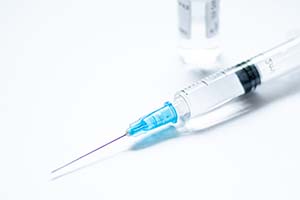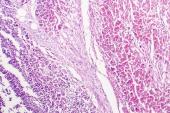COVID-19: TCTMD’s Dispatch for June Week 2
We’re curating a list of COVID-19 research and other useful content, and updating it regularly.

Since March 2020, TCTMD reporter Todd Neale has been writing up breaking news and peer-reviewed research related to COVID-19 every weekday. In July 2021, we transitioned to Mondays, Wednesdays, and Fridays. If you have something to share, tell us. All of our COVID-19 coverage can be found on our COVID-19 Hub.
June 9, 2022
The United States has set out its plans for extending COVID-19 vaccinations to children under the age of 5 years provided vaccines are cleared by the US Food and Drug Administration, a move expected as early as next week, the New York Times reports. The Centers for Disease Control and Prevention would typically also need to recommend their use, although uptake is expected to be lower in this younger group.
Moderna announced yesterday that a modified version of its mRNA vaccine—a “bivalent booster” (mRNA-1273.214)— is more effective against the Omicron variant than its original mRNA-1273 vaccine. “Looking at these data alongside the durability we saw with our first bivalent booster candidate, mRNA-1273.211, we anticipate more-durable protection against variants of concern with mRNA-1273.214, making it our lead candidate for a fall 2022 booster,” a press release states.
 Babies exposed to COVID-19 in utero have a higher chance of developing neurodevelopmental changes, a study in JAMA Network Open concludes. Among 7,772 infants delivered during the COVID-19 pandemic in this analysis, those born to the 222 mothers who tested positive for SARS-CoV-2 while pregnant were significantly more likely to receive a neurodevelopmental diagnosis in the first 12 months after birth. The findings “highlight the need for prospective investigation of outcomes in children exposed to COVID-19 in utero,” beyond the other established risks of preterm delivery and birth complications, authors say.
Babies exposed to COVID-19 in utero have a higher chance of developing neurodevelopmental changes, a study in JAMA Network Open concludes. Among 7,772 infants delivered during the COVID-19 pandemic in this analysis, those born to the 222 mothers who tested positive for SARS-CoV-2 while pregnant were significantly more likely to receive a neurodevelopmental diagnosis in the first 12 months after birth. The findings “highlight the need for prospective investigation of outcomes in children exposed to COVID-19 in utero,” beyond the other established risks of preterm delivery and birth complications, authors say.
An FDA advisory panel voted 21-0 with one abstention that the agency should approve the Novavax COVID-19 vaccine. The recombinant protein vaccine is a “more-traditional” vaccine formulation, similar to that used for diseases like influenza, and is already approved in more than 40 countries worldwide, a Reuters summary notes. If the FDA follows its advisors’ advice, the vaccine would be the fourth approved for the United States. The World Health Organization cleared the product, NVX-CoV2373, which can be stored at regular refrigeration temperatures, for emergency use back in December 2021.
An analysis of more than 7,000 heart failure patients treated in a large New York City health system indicates that patients who were fully vaccinated or boosted were dramatically less likely to die, be hospitalized, or require ICU care over subsequent months, as compared with their unvaccinated or only partially vaccinated peers. TCTMD’s Todd Neale has the details from the short communication, published in the Journal of Cardiac Failure.
“Immune escape” is an increasingly common COVID-19 catchphrase as Omicron variants continue to proliferate, and is the focus of multiple studies this week:
- In the New England Journal of Medicine, investigators explore the pathways for variant evolution and immune evasion among immunocompromised patients and how these might differ in patients treated with monoclonal antibodies versus those capable of mounting a partial immune response. “Our results underscore the potential importance of selective pressures such as the use of monoclonal antibodies—in combination with the lack of an effective endogenous immune response—in promoting the emergence of SARS-CoV-2 escape mutations,” the authors warn.
- A study in Cell details how spike sequences of BA.4 and BA.5, while closely related to the BA.2 substrain, have additional mutations in the receptor binding domain of spike that may help explain why triple vaccination with the AstraZeneca or Pfizer vaccines are offering less protection as compared with the BA.1 and BA.2 subvariants, paving the way for repeat Omicron infections.
- In the Lancet Infectious Diseases, authors of a research letter approach the same “escape” questions from the stance of the therapeutic monoclonal antibodies against the different Omicron strains, noting, for example, that bamlanivimab, casirivimab, etesevimab, imdevimab, and tixagevimab had less effect against BA.2 and several subvariants than against the parental strain. Bebtelovimab, on the other hand, “was approximately twofold more effective against BA.2 and all Omicron subvariants tested than the parental virus.”
 An analysis of national electronic health records across England paints a full picture of the demographic factors, frequency of comorbidities, impact of the two principal COVID-19 waves, and the effect of vaccination on COVID-19 severity on 57 million people alive and registered with a general practitioner. Authors describe what they deem to be 10 different COVID-19 phenotypes, associated with five severity categories, and unique disease and mortality “trajectories” for the different pandemic waves. This type of modelling, they write in the Lancet Digital Health, could prove useful for policy makers facing new variants and new waves.
An analysis of national electronic health records across England paints a full picture of the demographic factors, frequency of comorbidities, impact of the two principal COVID-19 waves, and the effect of vaccination on COVID-19 severity on 57 million people alive and registered with a general practitioner. Authors describe what they deem to be 10 different COVID-19 phenotypes, associated with five severity categories, and unique disease and mortality “trajectories” for the different pandemic waves. This type of modelling, they write in the Lancet Digital Health, could prove useful for policy makers facing new variants and new waves.
June 6, 2022
A new COVID-19 vaccine may be coming, with the US Food and Drug Administration (FDA) expected to make a decision about authorizing the shot from Novavax within weeks, the Associated Press reports. “The Novavax vaccine already is used in parts of Europe and multiple other countries, but FDA clearance is a key hurdle. And health experts are closely watching to see if a new tool offers advantages, either in enticing vaccine holdouts or maybe even offering somewhat broader immunity.” Agency advisors are set to discuss the vaccine on Tuesday, and documents released ahead of the meeting indicate that rare cases of myocarditis—which have been linked to the mRNA vaccines—will be a topic of discussion for this shot, too (CIDRAP News).
 Tens of millions of COVID-19 vaccine doses, representing about 11% of those distributed by the US government, have been wasted, NBC News reports. Between December 2020 and the middle of May 2022, fully 82.1 million doses were discarded. “The overall amount of waste is in line with World Health Organization estimates for large vaccination campaigns,” the story notes. “But public health experts said the waste is still alarming at a time when less than half of fully vaccinated Americans have a booster shot—which is critical to fight newer, more contagious virus strains—and when many poorer countries continue to struggle with vaccine supply.”
Tens of millions of COVID-19 vaccine doses, representing about 11% of those distributed by the US government, have been wasted, NBC News reports. Between December 2020 and the middle of May 2022, fully 82.1 million doses were discarded. “The overall amount of waste is in line with World Health Organization estimates for large vaccination campaigns,” the story notes. “But public health experts said the waste is still alarming at a time when less than half of fully vaccinated Americans have a booster shot—which is critical to fight newer, more contagious virus strains—and when many poorer countries continue to struggle with vaccine supply.”
The proportion of people around the world with substantial levels of antibodies against SARS-CoV-2—either from infection or vaccination—reached 67% in October 2021, up from just 16% in February 2021, according to an update released by the World Health Organization (WHO) last week: “Due to a steep rise in the number of infections in many countries following the emergence of Omicron and increasing vaccine coverage, both vaccine- and infection-induced population seroprevalence levels are expected to have increased substantially since October 2021, albeit with sustained regional and subpopulation variations.”
The number of COVID-19 cases in the United States fell for the first time since late March, according to the latest numbers from the Centers for Disease Control and Prevention (CDC) released last week. As of June 1, Becker’s Hospital Review notes, the 7-day case average was 100,684, down 8.5% from the week before. On average, hospitalizations increased 4.7% and deaths dropped 23.1%.
 Booster COVID-19 vaccination during the Omicron wave was associated with a 57% lower risk of any SARS-CoV-2 infection and a 61% lower risk of symptomatic infection among the highly vaccinated population of NBA players, researchers report in JAMA. CIDRAP News gives more details.
Booster COVID-19 vaccination during the Omicron wave was associated with a 57% lower risk of any SARS-CoV-2 infection and a 61% lower risk of symptomatic infection among the highly vaccinated population of NBA players, researchers report in JAMA. CIDRAP News gives more details.
A preprint study, detailed by Reuters, indicates that Pfizer’s Paxlovid reduces COVID-19-related hospitalizations and deaths in both vaccinated and unvaccinated patients age 65 and older during a period of rising Omicron variant prevalence. But the data, from Clalit Health Services in Israel, suggest that the antiviral treatment does not prevent severe outcomes in younger individuals. Another study, also out of Israel and published in Clinical Infectious Diseases, shows that Paxlovid reduces severe COVID-19 or mortality in the Omicron era, but that it appears more effective in older patients and those who are immunosuppressed or have underlying neurological or cardiovascular disease.
Compared with white individuals living in Alaska, American Indians or Alaska Natives in the state have greater risks of COVID-19 and associated hospitalization and death, according to data in Morbidity and Mortality Weekly Report. That mirrors other studies conducted during the COVID-19 era and during the influenza A (H1N1) pandemic of 2009.
 More evidence points to the ability of specially trained dogs to sniff out SARS-CoV-2 infections. A study in PLOS One shows that compared with nasopharyngeal RT-PCR testing, dogs detected the virus in nasopharyngeal, saliva, and sweat samples with 97% sensitivity and 91% specificity (reaching 100% and 94%, respectively, in asymptomatic individuals). Use of dogs could be an alternative to standard testing “when it is necessary to obtain a result very quickly according to the same indications as antigenic tests in the context of mass screening,” the authors say. CIDRAP News has more.
More evidence points to the ability of specially trained dogs to sniff out SARS-CoV-2 infections. A study in PLOS One shows that compared with nasopharyngeal RT-PCR testing, dogs detected the virus in nasopharyngeal, saliva, and sweat samples with 97% sensitivity and 91% specificity (reaching 100% and 94%, respectively, in asymptomatic individuals). Use of dogs could be an alternative to standard testing “when it is necessary to obtain a result very quickly according to the same indications as antigenic tests in the context of mass screening,” the authors say. CIDRAP News has more.
Todd Neale is the Associate News Editor for TCTMD and a Senior Medical Journalist. He got his start in journalism at …
Read Full Bio





Comments